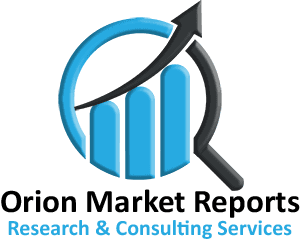Vascular Endothelial Growth Factor (VEGF) Inhibitor Market Global Trends, Market Share, Industry Size, Growth, Opportunities and Market Forecast – 2022 to 2028
The Vascular Endothelial Growth Factor (VEGF) Inhibitor Market is expected to reach at a CAGR of 73% during the forecast period 2022-2028.
Vascular endothelial growth factor (VEGF) is an angiogenic factor responsible for the formation of blood vessels from pre-existing blood vessels or vascular endothelial cells. This growth factor induces tumor angiogenesis and thus plays an important role in the survival of various types of tumors. VEGF inhibitors are chemicals that limit the function of these vascular endothelial growth factors, preventing further cancer growth and ultimately treating the condition. The VEGF inhibitor can be produced in the form of a drug and can be used as an effective cancer treatment.
Market Segments
By Target
- VEGF-A
- VEGF-B
- VEGF-C
- VEGF-D
By Inhibitor
- Tyrosine Kinase Inhibitors
- Monoclonal Antibodies
- VEGFR Hybrids
By Application
- Oncology
- Ophthalmology
Key Players
Major players in the vascular endothelial growth factor (VEGF) inhibitor market are Pfizer, Amgen, Roche, Xbrane Biopharma AB, Genentech Inc., AstraZeneca plc, Bayer AG, Eli Lilly and Company, and Allergan plc.
Scope of the Report
The research study analyzes the global Vascular Endothelial Growth Factor (VEGF) Inhibitor industry from 360-degree analysis of the market thoroughly delivering insights into the market for better business decisions, considering multiple aspects some of which are listed below as:
Recent Developments
o Market Overview and growth analysis
o Import and Export Overview
o Volume Analysis
o Current Market Trends and Future Outlook
o Market Opportunistic and Attractive Investment Segment
Geographic Coverage
o North America Market Size and/or Volume
o Latin America Market Size and/or Volume
o Europe Market Size and/or Volume
o Asia-Pacific Market Size and/or Volume
o Rest of the world Market Size and/or Volume
Key Questions Answered by Vascular Endothelial Growth Factor (VEGF) Inhibitor Market Report
1. What was the Vascular Endothelial Growth Factor (VEGF) Inhibitor Market size in 2019 and 2020; what are the estimated growth trends and market forecast (2022-2028).
2. What will be the CAGR of Vascular Endothelial Growth Factor (VEGF) Inhibitor Market during the forecast period (2022-2028)?
3. Which segments (product type/applications/end-user) were most attractive for investments in 2022? How these segments are expected to grow during the forecast period (2022-2028).
4. Which manufacturer/vendor/players in the Vascular Endothelial Growth Factor (VEGF) Inhibitor Market was the market leader in 2020?
5. Overview on the existing product portfolio, products in the pipeline, and strategic initiatives taken by key vendors in the market.
The report will be delivered within 48-72 hours after payment confirmation
